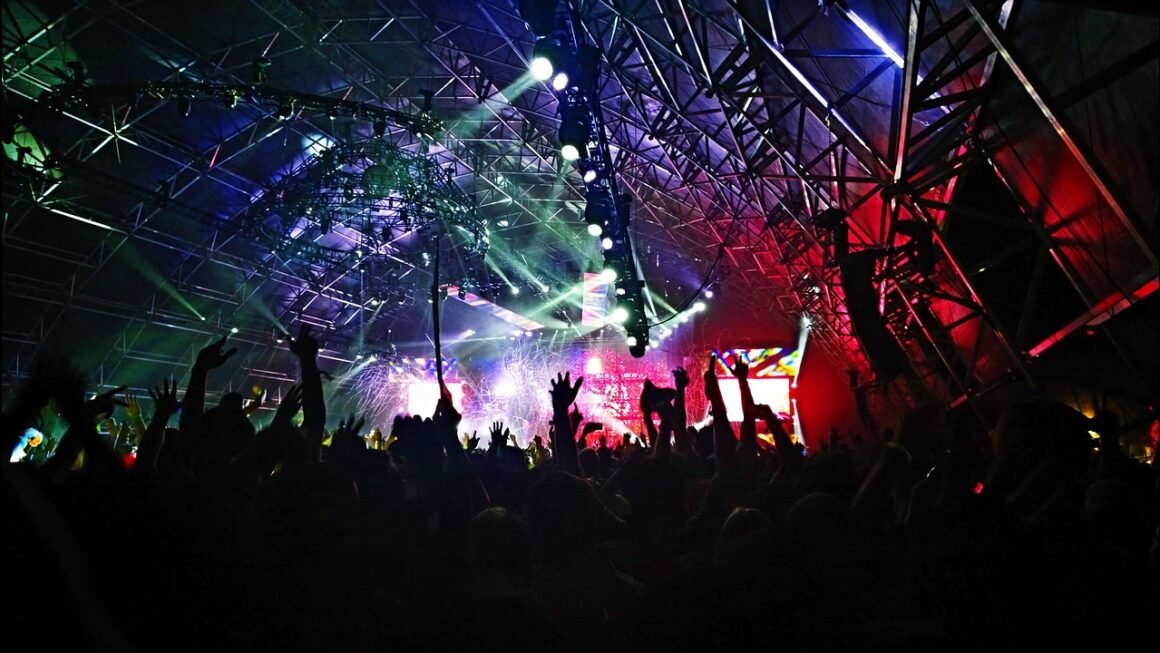Movies: a window into different worlds, a source of entertainment, and a powerful form of storytelling. From silent films to blockbuster franchises, cinema has captivated audiences for over a century. This blog post delves into the world of movies, exploring their history, genres, impact, and how to best enjoy the cinematic experience. Whether you’re a casual viewer or a dedicated cinephile, there’s something here for everyone.
The History of Movies: A Cinematic Journey
Early Innovations and Silent Films
The story of movies begins in the late 19th century with groundbreaking inventions. Think Thomas Edison’s Kinetoscope and the Lumière brothers’ Cinématographe. These inventions made it possible to capture and project moving images for the first time. The early films were short, silent, and often depicted everyday life.
- Key figures: Thomas Edison, Lumière brothers, Georges Méliès
- Notable early films: Arrival of a Train at La Ciotat (1895), A Trip to the Moon (1902)
- Characteristics: Short running times, black and white, no synchronized sound
The Rise of Hollywood and the Golden Age
The early 20th century saw the rise of Hollywood as the global center of filmmaking. The “Golden Age” of Hollywood, spanning from the late 1920s to the 1960s, was characterized by:
- The introduction of sound (“talkies”) revolutionizing the industry. The Jazz Singer (1927) marked this pivotal moment.
- The studio system controlling film production, distribution, and exhibition.
- The emergence of iconic stars like Charlie Chaplin, Greta Garbo, and Humphrey Bogart.
- Popular genres included musicals, comedies, dramas, and Westerns.
Modern Cinema: Technology and Globalization
Modern cinema has been shaped by technological advancements and globalization.
- Advances in special effects (CGI, motion capture) allow for visually stunning and immersive experiences.
- Digital filmmaking and distribution have democratized the industry, allowing independent filmmakers to reach wider audiences.
- Globalization has led to increased collaborations and cross-cultural influences in filmmaking.
- Blockbuster franchises and superhero movies dominate the box office. For example, the Marvel Cinematic Universe has grossed over $27 billion worldwide.
Exploring Movie Genres: A World of Choices
Action and Adventure
Action and adventure movies are known for their high-octane thrills and escapist storytelling.
- Common elements: Stunts, explosions, chases, and heroic protagonists.
- Popular franchises: James Bond, Mission: Impossible, Fast & Furious.
- Examples: Raiders of the Lost Ark, Mad Max: Fury Road
- Benefits: Offer excitement, visual spectacle, and a sense of adventure.
Comedy
Comedy movies aim to entertain and amuse audiences through humor.
- Subgenres: Romantic comedy, slapstick, satire, dark comedy.
- Key elements: Witty dialogue, physical humor, and relatable characters.
- Examples: Some Like It Hot, Bridesmaids, The Grand Budapest Hotel
- Benefits: Provide laughter, stress relief, and a lighthearted escape.
Drama
Drama movies explore serious themes and complex human relationships.
- Characteristics: Emotional depth, character-driven narratives, and realistic portrayals of life.
- Subgenres: Crime drama, historical drama, romance drama, family drama.
- Examples: The Godfather, Schindler’s List, Moonlight.
- Benefits: Provoke thought, elicit empathy, and offer insights into the human condition.
Science Fiction and Fantasy
Science fiction and fantasy movies transport viewers to imaginative worlds.
- Sci-fi elements: Futuristic technology, space travel, aliens.
- Fantasy elements: Magic, mythical creatures, and epic quests.
- Examples: Star Wars, The Lord of the Rings, Blade Runner.
- Benefits: Spark imagination, explore philosophical themes, and offer escapism.
Horror
Horror movies aim to scare, shock, and thrill audiences.
- Elements: Suspense, gore, jump scares, and psychological terror.
- Subgenres: Slasher, supernatural, psychological horror, creature features.
- Examples: Psycho, The Exorcist, Get Out.
- Benefits: Provide adrenaline rush, explore primal fears, and offer a cathartic release.
The Impact of Movies: Beyond Entertainment
Cultural Influence
Movies play a significant role in shaping cultural values, norms, and trends.
- Fashion trends: Movies often influence clothing styles and beauty standards.
- Language: Catchphrases and dialogues from movies can become part of everyday language.
- Social issues: Movies can raise awareness and spark discussions about important social and political issues.
- Example: The portrayal of strong female characters in movies like Wonder Woman and Captain Marvel has inspired many.
Economic Impact
The movie industry is a major economic force, generating billions of dollars in revenue.
- Box office sales: Worldwide box office revenue reached $42.5 billion in 2019. (Pre-pandemic numbers demonstrate the scale.)
- Employment: The industry employs millions of people worldwide, from actors and directors to technicians and distributors.
- Tourism: Movies can boost tourism by showcasing locations and attracting fans.
- Merchandising: Film-related merchandise generates significant revenue through toys, apparel, and collectibles.
Psychological Effects
Movies can have a profound impact on our emotions, thoughts, and behaviors.
- Emotional response: Movies can evoke a wide range of emotions, from joy and sadness to fear and anger.
- Identification: Viewers often identify with characters and their experiences.
- Influence on behavior: Studies have shown that movies can influence attitudes, beliefs, and behaviors, particularly in young people.
- Exposure to violence: Research suggests that exposure to violence in movies can desensitize viewers and increase aggression.
Enhancing Your Movie Experience: Tips and Tricks
Choosing the Right Movie
Selecting a movie can be overwhelming with so many options available.
- Read reviews: Check critics’ reviews and audience ratings on sites like Rotten Tomatoes and IMDb.
- Watch trailers: Get a sense of the movie’s plot, tone, and visual style by watching the trailer.
- Consider your mood: Choose a movie that aligns with your current mood and interests.
- Ask for recommendations: Get recommendations from friends, family, or online communities.
Creating the Perfect Viewing Environment
Creating a comfortable and immersive viewing environment can enhance your enjoyment of the film.
- Dim the lights: Reduce glare on the screen by dimming the lights or closing the blinds.
- Minimize distractions: Turn off your phone, silence notifications, and ask others to be quiet.
- Adjust the volume: Find a comfortable volume level that allows you to hear the dialogue clearly without being too loud.
- Prepare snacks and drinks: Have your favorite snacks and drinks readily available to enjoy during the movie.
Engaging with Movies Actively
Going beyond passively watching a film can deepen your appreciation and understanding.
- Pay attention to details: Notice the cinematography, editing, and sound design.
- Analyze the themes: Identify the underlying themes and messages of the movie.
- Discuss with others: Share your thoughts and opinions with friends or join online discussions.
- Read about the film: Research the making of the film, the director’s intentions, and critical interpretations.
Conclusion
Movies are more than just entertainment; they are a powerful form of art that can shape our culture, economy, and psyche. From their humble beginnings to the technological marvels of modern cinema, movies have consistently evolved, offering new ways to tell stories and connect with audiences. By understanding the history, genres, and impact of movies, and by taking steps to enhance our viewing experience, we can fully appreciate the magic of cinema. So, grab some popcorn, dim the lights, and immerse yourself in the captivating world of movies!



